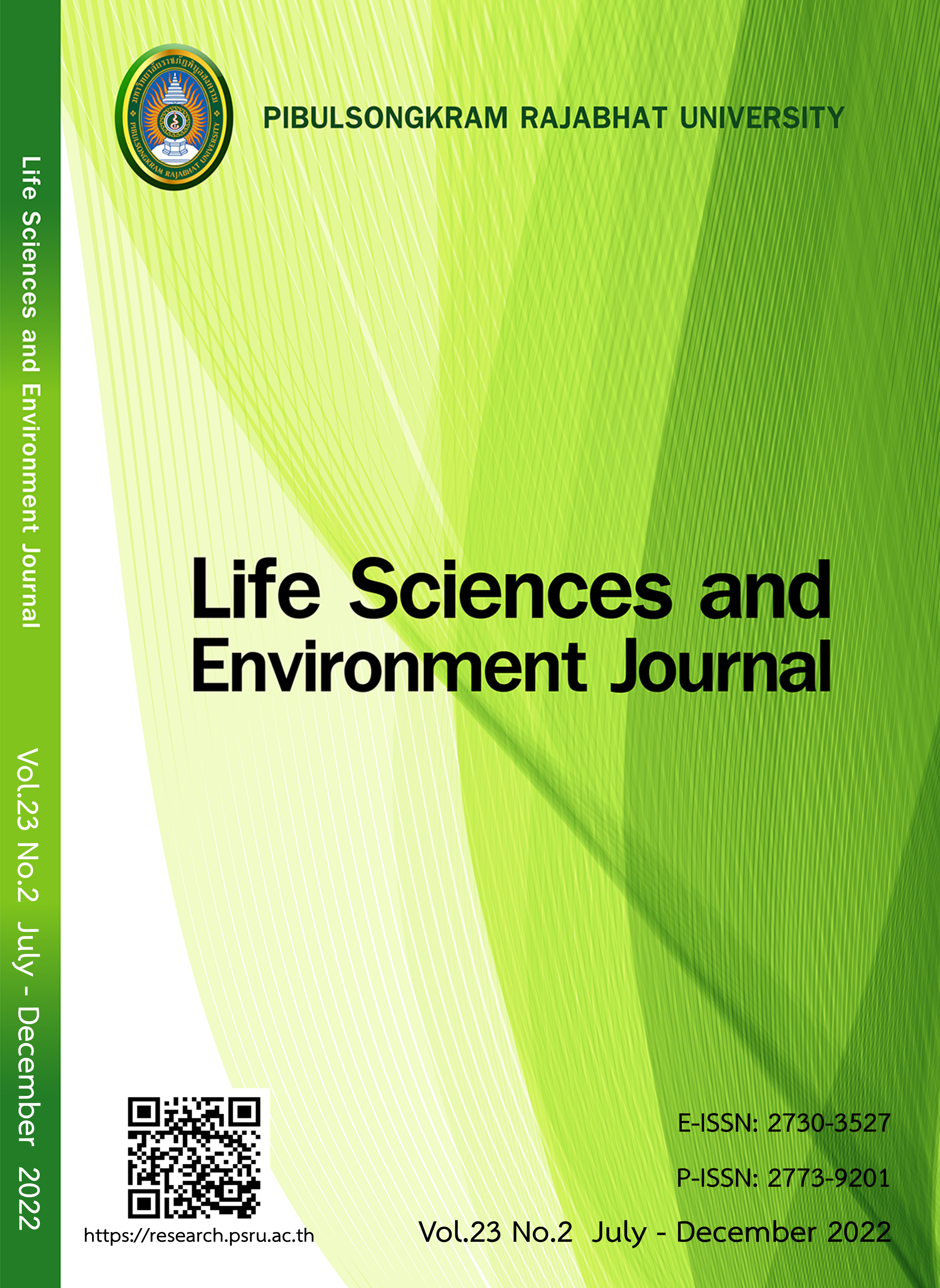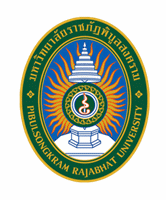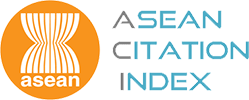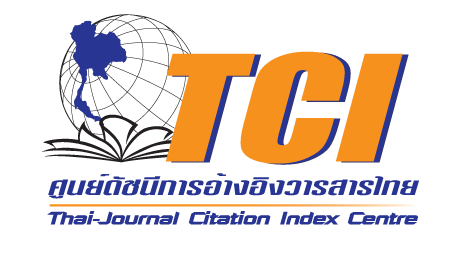การวิเคราะห์ปัจจัยที่มีอิทธิพลต่อประสิทธิภาพการจัดการเทคโนโลยีอุตสาหกรรมของบริษัทผู้ผลิตชิ้นส่วนยานยนต์
DOI:
https://doi.org/10.14456/lsej.2022.37คำสำคัญ:
ประสิทธิภาพ , ปัจจัย 5M1E , ธุรกิจผลิตชิ้นส่วนยานยนต์บทคัดย่อ
งานวิจัยนี้มีวัตถุประสงค์ 1) วิเคราะห์ปัจจัยที่มีอิทธิพลจำแนกโดยผู้ผลิต OEM และ REM 2) การวิเคราะห์น้ำหนักเพื่อยืนยันและจัดลำดับความสำคัญของปัจจัยที่มีอิทธิพล ผลวิเคราะห์องค์ประกอบเชิงสํารวจปัจจัยค่าความผันแปรสะสมเท่ากับ 65.22% มีค่าน้ำหนักองค์ประกอบระหว่าง 0.440–0.864 ผลการสกัดปัจจัยทั้ง 6 ด้าน (5M1E) คือ ด้านบริหารทรัพยากรบุคคล ค่าเฉลี่ย ()
3.82 ค่าเบี่ยงเบนมาตรฐาน (SD) 0.76 ด้านการบริหารวัตถุดิบ ค่าเฉลี่ย () 3.85 ค่าเบี่ยงเบนมาตรฐาน (SD) 0.63 ด้านบริหารกระบวนการผลิต ค่าเฉลี่ย (
) 3.79 ค่าเบี่ยงเบนมาตรฐาน (SD) 0.65
ด้านเครื่องจักรและอุปกรณ์ในการดำเนินงาน ค่าเฉลี่ย () 3.77 ค่าเบี่ยงเบนมาตรฐาน (SD) 0.68 ด้านการประเมินผลการปฏิบัติงาน ค่าเฉลี่ย (
) 3.82 ค่าเบี่ยงเบนมาตรฐาน (SD) 0.66 และด้านสภาพแวดล้อมการทำงาน ค่าเฉลี่ย (
) 3.76 ค่าเบี่ยงเบนมาตรฐาน (SD) 0.70 อยู่ในเกณฑ์ระดับมาก ซึ่งโมเดลมีความสอดคล้องกลมกลืนกับข้อมูลเชิงประจักษ์ มีค่า Chi–Square = 768.620, df = 709.0, Sig. = 0.060 >0.05 และ CMIN/df. = 1.084< 2.0 ผลวิเคราะห์ดัชนีมีความสอดคล้องและค่าสถิต ิดัชนีวัดความสอดคล้องกลมกลืนเชิงสัมพัทธ์ (CFI) = 0.998 > 0.90 ดัชนีวัดความกลมกลืน (GFI) = 0.944 > 0.90 ดัชนีวัดความกลมกลืนที่ปรับแก้ไขแล้ว (AGFI) = 0.899 > 0.80 ดัชนีรากที่สองของค่าเฉลี่ยความคลาดเคลื่อนกำลังสองของการประมาณค่า (RMSEA) = 0.013 < 0.05 ดัชนีความกลมกลืนประเภทเปรียบเทียบกับรูปแบบอิสระ (NFI) = 0.973 > 0.90 ดัชนีความกลมกลืนเชิงเปรียบเทียบกับรูปแบบฐาน (IFI) = 0.998 > 0.90 และดัชนีรากของค่าเฉลี่ยกำลังสองของส่วนเหลือ (RMR) = 0.047 < 0.05
เอกสารอ้างอิง
Automotive Institute Ministry of Industry. Automotive industry master plan 2012 - 2016. 2012. Available
at: http://www.thaiauto.or.th/2012/th/research/. Accessed October 3, 2022.
Bollen KA. Structural equations with latent variables. New York: Wiley; 1989.
Diamantopoulos A, Siguaw JA. Introduction to LISREL: A guide for the uninitiated. London: SAGE Publications, Inc; 2000.
Foundation for Consmers. Title: "Consumer Foundation reveals 3 years (2013-2016) total of 239.complaints, many problems risk their lives". 2013. Available at: http://complaint@con sumerthai.org. Accessed December 12, 2020.
Egdair I, Lihniash S. Analysis of factors which impact on productivity of manufacturing companies. Business Management and Consumer Studies: An International Journal 2016;1(2):78-84.
Hair, Rachelle L, Haddock, Michael S. Quinnand. Multivariate data analysis, with readings. USA: Prentice Hall International, INC.; 1998.
Kaiyawan Y. Practice and monitoring and evaluation of quality control and inspection guidelines. Auto parts products contract manufacturing companies and deliver them to automobile companies. Direct Phetchaburi: Faculty of Industrial Technology Phetchaburi Rajabhat University; 2010.
Kaiyawan Y. Analysis of the structural equation model with AMOS. Chulalongkorn Publishing University; 2013.
Krejcie RV, Morgan EW. Education and psychological measurement. Minisota University U.S.A.; 1970; 608-609.
Ministry of Commerce. Data as of Jan.-June 2021, did you know that in the first half of 2021, “what Thailand exports the most” from Thai E-finance news agency, July 30, 2021.
Ministry of Industry. Strategy for the development of Thai Industry 4.0 for 20 years (2017 - 2036). Bangkok; 2016.
Office of the Permanent Secretary. Ministry of Industry. Strategic Plan, Ministry of Industry 2017-2021. Bangkok: Industry Ministry of Industry; 2016.
Schumacker RE, Lomax RG. A beginner’s guide to structural equation modeling (3rd). New Jersey: Lawrence Erlbaum Associates; 2010.
Srisaat B. Statistical Methods for Research, Volume 1 (5th Edition). 2013. Available at: http://sites.google.com/site/hone./Suwiriyasan. National economic development plan of Thailand. First Edition, Phase 1 (1961-1963). Accessed December 3, 2019.
Subthaweetham A. Thailand’s automotive industry and parts in the Covid-19 era. Broken column Issue, Prachachat Business newspaper, May 3, 2020.
Tirakanan S. Research methods in social sciences: A guide to practice. 5th printing: Faculty of Education Ramkhamhaeng University; 2005.
ดาวน์โหลด
เผยแพร่แล้ว
รูปแบบการอ้างอิง
ฉบับ
ประเภทบทความ
สัญญาอนุญาต
ลิขสิทธิ์ (c) 2022 Life Sciences and Environment Journal

อนุญาตภายใต้เงื่อนไข Creative Commons Attribution-NonCommercial-NoDerivatives 4.0 International License.
Each article is copyrighted © by its author(s) and is published under license from the author(s).










